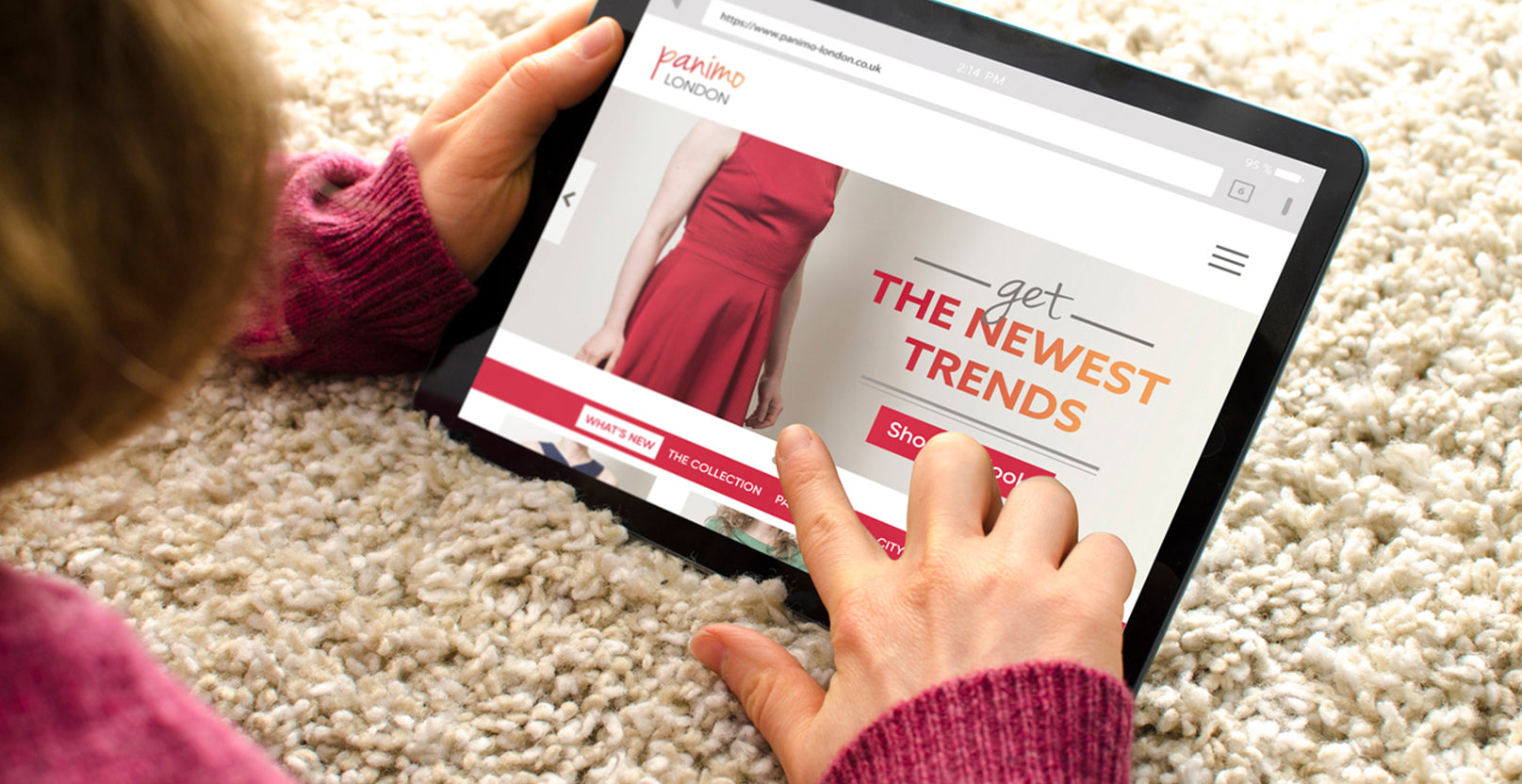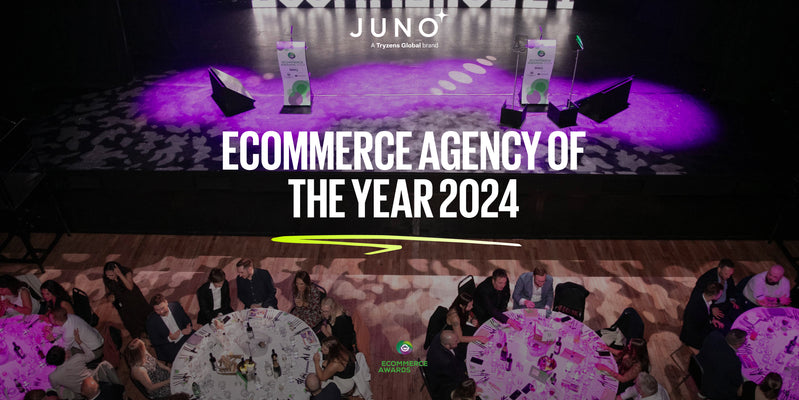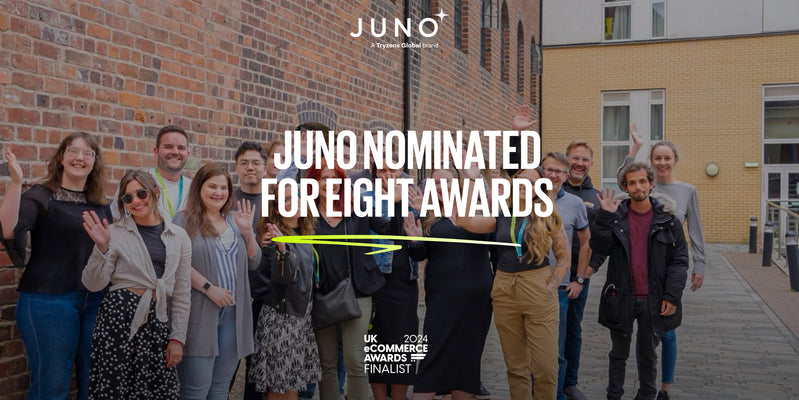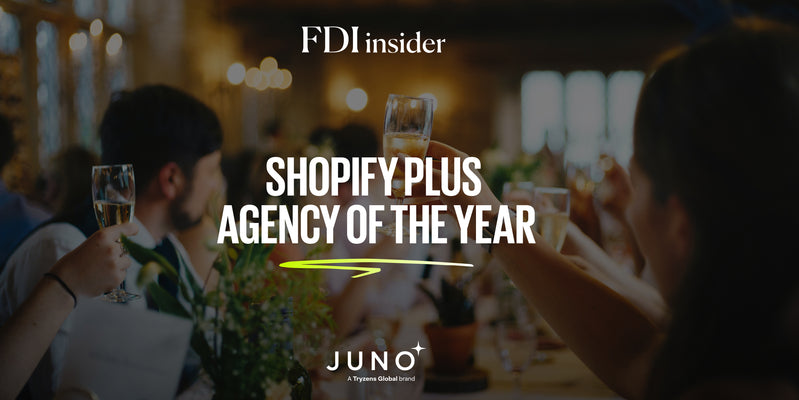Jul 02,2019 Juno Ecommerce Ecommerce
Features of a successful fashion ecommerce site: Is yours up to scratch?

Fashion ecommerce is a winner-takes-all game. With 20% of the top fashion brands taking 100% of the economic profit, the industry is more competitive than ever.
So, what do the best ecommerce fashion brands all have in common? What makes the top sites, well... top? We’ve laid out the key characteristics of all the best fashion stores so you can make sure you hold your own against the competition.
They’re great at communicating product details & quality.
Until technology takes a giant leap forward to the point where we can instantly teleport a product into a shopper’s living room, ecommerce stores have to find easier ways to communicate the finer details of their products. This is where an online shopping experience falls short of a brick-and-mortar store.
Let’s look at the ways some of the best online fashion brands are doing this.
Detailed product descriptions & photography
Ally Capellino specialises in high-end bags and accessories. When asking their customers to part with a considerable amount of money, it’s vital for them to be able to demonstrate the details and quality of their products.
One way Ally Capellino does this is through a wide range of high-quality photography. Their product images are clear enough to show the quality of the material and varied enough to show the product from every angle, even inside.
These images, coupled with a comprehensive description and a list of product details, leave shoppers feeling confident that there’ll be no nasty surprises when they receive their order. Alongside these details, Ally Capellino has also included a guide on caring for the bag.
A good product description is one of the most valuable tools in your arsenal. It should include materials, key features, sizing, fit (if necessary) and what the product’s purpose is. Is it best-suited to everyday or occasion wear? Night in or night out?
Product videos
If you’ve got the resources, you could go the extra mile and include a video alongside your product photography like ecommerce giant ASOS. This helps shoppers see the fit of a garment and how it moves when worn, and can also work to reduce buyer hesitation and return rates.
They clearly advertise an easy (preferably free) returns policy.
There are few guarantees with online clothes shopping. You can’t ensure the item your shopper ordered will fit or that it will be appropriate for what they had in mind. A clear returns policy is essential for easing this barrier to purchase.
It’s not unusual for online shoppers to buy multiple sizes or options with the intention of returning the ones that aren’t suitable, and most people expect to be able to do so at no extra cost.
Try before you buy
A complex, expensive returns policy could be costing you vital sales – sales that ASOS and other fashion ecommerce giants will gladly pick up. ASOS go one step further to ensure their customers find the right fit by using Klarna, a pay-later checkout option that allows shoppers to ‘try before they buy’.
They have a strong personality, tailored to their customer.
In a crowded industry, the most successful fashion brands are the ones that customers can easily identify with.
Your brand should speak the language of your audience, with a consistent personality that’s communicated through your imagery and content. Shoppers should be able to get a sense of your brand’s personality across your channels – whether that’s on-site, socials, email or in-app. It should shine through every element of your site – not just your homepage and blog posts, but also your FAQ page, your returns policy and any UX copy.
Talk like their best friend
One easy place to convey your brand’s personality is in your product descriptions.
Take a look at Pretty Little Thing’s product descriptions below, tailored to their core audience of gen Z.
The most successful fashion brands and stores successfully create and maintain personalities that are both familiar and aspirational to their core demographic. The result is that their customers see their brand as a tool for self-expression. This is what you want. If you can capture this, you’re on to a winner.
They help customers create a ‘look’.
You might have noticed that Pretty Little Thing’s product descriptions also help their customers visualise what to pair each item with, as do their model and lifestyle pictures. There’s a multitude of tools you can provide to help your customers with this (and encourage them to spend a little more in the process).
‘Complete the look’
This is the tool for upselling in fashion. But it’s only going to work if you feature full outfits in your product imagery.
So it’s this:
And not just this:
Your customer has already clicked through to view one product, but chances are they’re going to be interested in the entire outfit, which presents an opportunity for you to add to their order. In fact, it can be frustrating when brands don’t do this. It means customers have to hunt for the other products the model is wearing.
Make it as easy as possible for shoppers to add the additional items to their bag. Here’s how New Look do it:
Lookbooks
Fashion is aspirational. Shoppers want to keep at the forefront of the latest trends, so show them what they are. A striking video or a collection of photos can immediately inspire a shopper when landing on your site.
Lookbooks also give you another opportunity to showcase your brand’s personality – which your shoppers can use as inspiration to create outfits that express themselves.
Fashion edits
Similarly to lookbooks, fashion edits help inspire your shoppers with the latest trends. By grouping similar products together, edits give you the chance to capitalise on these shifting trends – such as utility style, denim, animal prints, etc.
Edits and collections also help direct shoppers to the kind of outfits they’re looking for. For example, you might have a festival edit, a workwear collection and a range devoted to ‘summer nights out’.
Here’s an example from Marks and Spencer:
Not only does this give Holly Willoughby fans a clear idea of how to replicate her style, but it also capitalises on Holly’s fame and steers her audience towards Marks and Spencer.
Shoppable onsite Instagram feeds
Shoppable Insta feeds are an ideal way to target a young customer base, and can be an effective way to capture window shoppers. Not everyone landing on your site has a clear idea of what they want, so give them a chance to see what your models, influencers and customers are wearing on a day-to-day basis.
To make sure you have a successful feed, it needs to be packed with lifestyle imagery – not just posed or product shots. A good rule of thumb is to include a maximum of 20% product shots, with the rest of your feed devoted to aspirational lifestyle imagery.
When customers don’t know what they’re looking for, these tools inspire them before they go elsewhere to find out. If you’re not already leveraging these tips, now’s a great time to do so. And once you do, you can enjoy increases in average order value and repeat purchases.
They cater to all types of shoppers.
Not everyone shops in the same way. Some need inspiration to identify what they want, while others know exactly what they’re looking for.
These features will ensure you’re catering to all your visitors and their different shopping styles:
Filter by popularity
It’s all about confidence. Customers looking to follow the trends (or perhaps the opposite) will find browsing your store much easier with this function.
Site-wide search
It’s always surprising to see a fashion site without this function, but it happens. Some shoppers are in a hurry and are looking for something specific, so help them find it on your site before they move onto the next.
Wishlists
Whether they’re short on funds or short on time, visitors aren’t always on your site with the immediate plan to buy. Offering a wishlist feature encourages shoppers to create an account and save the items they’d like to buy next time. They’re also ideal retargeting opportunities, making them a valuable tool for your marketing team.
‘You may also like’
Not only does this offer shoppers inspiration, but presenting similar options can also stop you from losing a customer when their size or preferred colour is out of stock. ‘You may also like’ sections give your shoppers that kind of personalised experience that encourages them to keep looking and keep shopping.
They’ve got an all-around strong, beautiful site.
Customers’ expectations for online shopping are higher than ever. Aside from all the other key elements of an ecommerce site (such as a responsive design, clear navigation and fast-loading webpages), you need to deliver personalised shopping experiences that are, as a minimum, equal to the brands dominating the market.
At the end of the day, fashion is about aesthetics. If your site doesn’t look good, your brand doesn’t look good.
Not sure how to get started? Get in touch today. We design beautiful, high-end and high-street fashion sites for some of the biggest UK brands.


